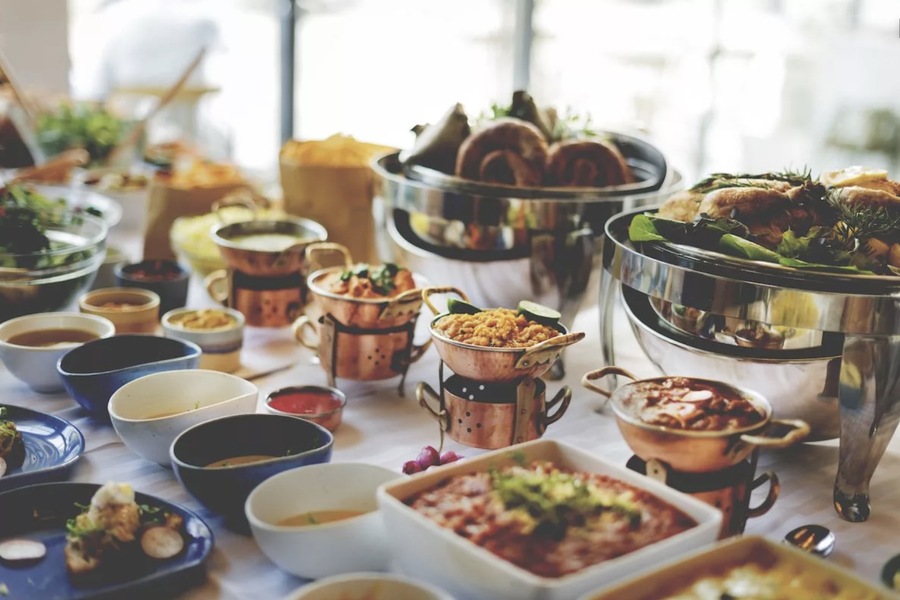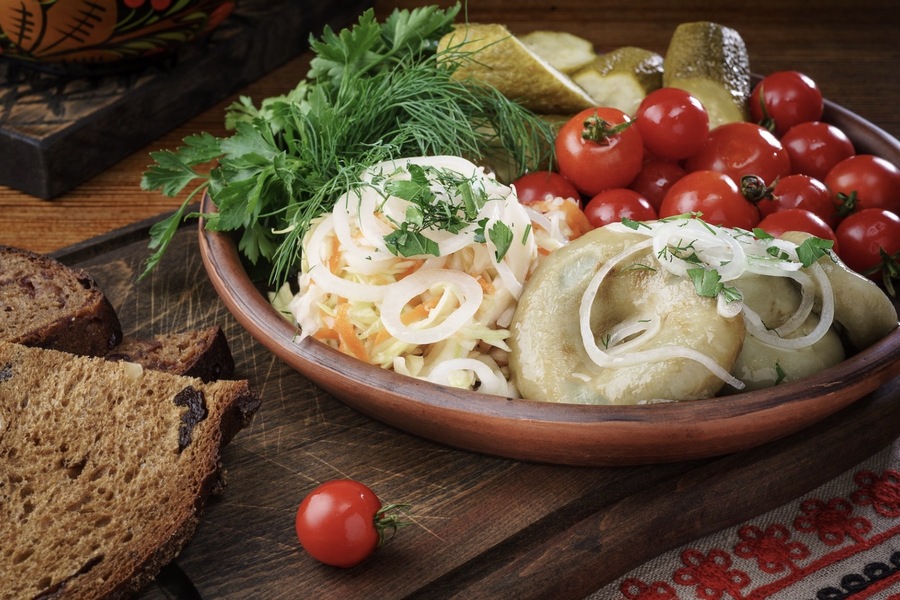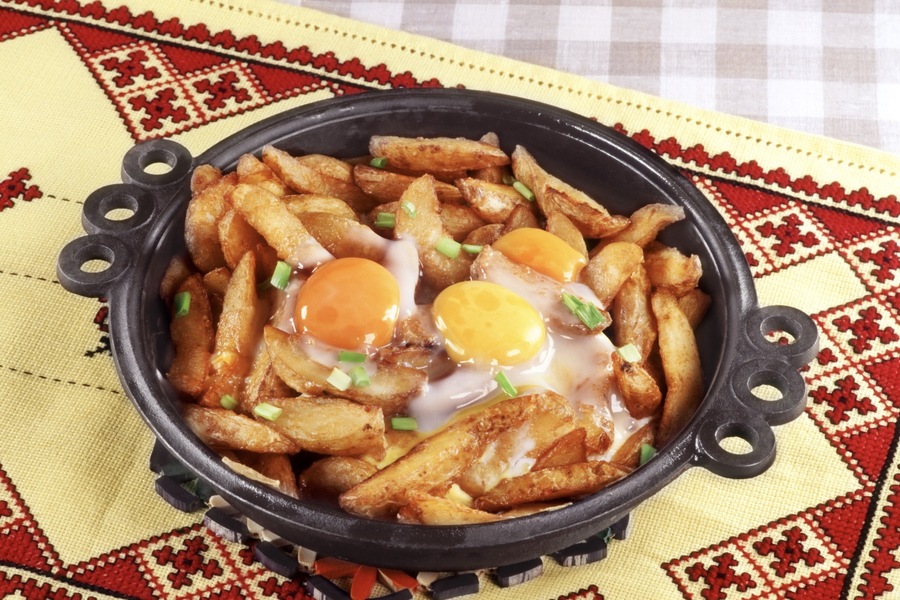
Russian cuisine is a culinary universe deeply rooted in the country’s history, geography, and cultural traditions. Stretching across vast forests, sprawling plains, and rugged tundra, Russia’s natural environment has profoundly influenced its cuisine. With long winters, abundant forests, and a unique integration of Eastern and Western culinary practices, Russian food offers a rich combination of hearty dishes, preserved ingredients, and vibrant flavors. Over centuries, it has evolved from humble peasant fare to a sophisticated array of dishes celebrated worldwide. For those seeking the finest Russian dining experiences, Great List can guide you to the best establishments. In this detailed exploration, we uncover the essence, history, iconic dishes, and cultural significance of Russian cuisine.
Historical Evolution: The Stages of Russian Cuisine
The evolution of Russian cuisine reflects the historical and social transformations of the nation. As culinary writer V.V. Pokhlebkin outlined, the development of Russian cuisine can be divided into several distinct stages:
1. Old Russian Cuisine (9th–16th centuries)
Old Russian cuisine was shaped by the agrarian lifestyle of early Slavic tribes. Food was primarily simple and wholesome, relying on natural ingredients such as grains, vegetables, wild berries, and fish. The limited use of spices and the absence of frying made meals straightforward yet hearty. Rye bread was the cornerstone of the diet, with porridge (often made from buckwheat or barley) serving as a daily staple.
Dishes were heavily influenced by the need to endure harsh winters, leading to the widespread practice of pickling, fermenting, and drying. Turnips, cabbage, and mushrooms were preserved for sustenance during the colder months. Soups like shchi (cabbage soup) and ukha (fish soup) became essential due to their warming and nourishing properties.
Religious fasting played a major role, dividing meals into fasting (lean) and non-fasting categories. Fasting dishes included vegetables, mushrooms, and fish, while non-fasting dishes featured meats, dairy, and eggs.
2. Cuisine of the Moscow State (17th century)
During this era, Russia’s growing interaction with the East and the West began influencing its cuisine. The Muscovite period saw the refinement of traditional recipes and the introduction of new ingredients like exotic spices, dried fruits, and nuts from trade routes.
Soups continued to dominate, with the emergence of more complex varieties like rassolnik (pickle-based soup) and solyanka (hearty soup with meat or fish). Pies and pastries, such as kulebyaka (layered fish pie), gained prominence, often serving as the centerpiece of feasts.
3. Peter the Great-Catherine Era (18th century)
Under Peter the Great, Russia began a significant cultural shift as it sought to modernize and westernize. This transformation extended to food, with French culinary techniques influencing Russian kitchens. Noble households employed foreign chefs, and dishes such as beef Stroganoff and French-inspired pastries became symbols of sophistication.
During this period, elaborate multi-course meals became fashionable, and new ingredients such as potatoes, tomatoes, and corn were introduced. However, traditional Russian dishes like borscht and pelmeni remained deeply ingrained in the national identity.
4. All-Russian National Cuisine (1860s–early 20th century)
This era marked the integration of regional cuisines into a cohesive national culinary identity. With improved transportation, ingredients from across the vast Russian Empire became accessible, enriching the diversity of the Russian table.
Dishes like pirozhki (stuffed buns), vareniki (dumplings), and kvass (fermented rye beverage) became staples across all social classes.
5. Soviet Cuisine (1917–early 1990s)
The Soviet era brought practicality and standardization to Russian cuisine. Government policies, rationing, and communal living influenced the simplicity of recipes. Dishes like Olivier salad (a creamy potato salad) and kotleti (meat patties) were economical and filling. Soviet cuisine also incorporated elements from the cuisines of other Soviet republics, such as Georgian khachapuri (cheese bread) and Uzbek plov (rice pilaf).
Despite the restrictions, Soviet cuisine maintained the essence of traditional Russian food, adapting it to the needs of a modern, industrialized society.

Core Characteristics of Traditional Russian Cuisine
1. Regional Diversity
Russia’s vast expanse and diverse climates have led to distinct regional cuisines:
Northern Cuisine: Focuses on fish, berries, and hearty stews.
Siberian Cuisine: Known for pelmeni, game meats, and preserved foods. Southern Cuisine: Features rich, spiced dishes influenced by Central Asian and Caucasian flavors.
2. Bread and Grains as Lifeblood
Bread holds a sacred place in Russian culture, symbolizing hospitality and abundance. Rye bread, kalachi (small loaves), and pies are traditional staples. Grains like buckwheat, barley, and oats form the base of porridges, which are integral to the Russian diet.
3. Soups and Stews: A Pillar of Russian Cuisine
Soups are the heart of Russian meals:
Shchi: A cabbage-based soup that varies by region and household.
Borscht: A beet soup enriched with sour cream, beloved for its vibrant color and flavor.
Okroshka: A refreshing cold soup made with vegetables and kvass.
4. Pickling and Preservation
Due to long winters, Russians mastered preservation techniques. Pickled cucumbers, sauerkraut, and marinated mushrooms are ubiquitous, providing a tangy contrast to rich dishes.
5. Dairy as a Culinary Staple
Sour cream, butter, and cottage cheese are essential ingredients, adding creaminess to soups, salads, and desserts like syrniki.
Iconic Russian Dishes and Beverages
Pelmeni: Meat-filled dumplings served with butter or sour cream.
Blini: Thin pancakes, often served with caviar or jam.
Kulebyaka: A complex pie filled with fish, mushrooms, and rice.
Kvass: A slightly fermented beverage made from rye bread.
Olivier Salad: A festive potato salad with peas, eggs, and mayonnaise. Medovik: A layered honey cake popular for its delicate sweetness.
The Role of Russian Cuisine in Cultural Traditions
Russian cuisine is deeply intertwined with cultural celebrations and religious observances. Feasts during holidays like Easter and Christmas feature lavish spreads, including roasted meats, pirogi, and sweet pastries. On Maslenitsa (Butter Week), families gather to enjoy blini as a symbol of the sun, celebrating the end of winter.

Modern Russian Cuisine: Preserving Tradition in a Globalized World
Today, Russian cuisine continues to thrive both domestically and internationally. Restaurants worldwide offer a taste of Russia, from authentic borscht to luxurious caviar. At the same time, modern Russian chefs are reinterpreting traditional recipes, incorporating contemporary techniques and global influences.
Platforms like Great List have made it easier than ever to find authentic Russian dining experiences, whether in Moscow or abroad. These curated recommendations ensure that food enthusiasts can savor the best of Russian cuisine without hesitation.
Conclusion
Russian cuisine is a testament to the resilience, ingenuity, and hospitality of its people. From its ancient roots to its modern interpretations, it tells the story of a nation that embraces its traditions while adapting to the changing times. Whether you’re savoring a hearty bowl of borscht, indulging in a slice of Medovik, or sipping a glass of kvass, every bite offers a glimpse into the soul of Russia. Exploring this culinary heritage is not just about food—it’s a journey into the heart of Russian history and culture.



There are no reviews yet.